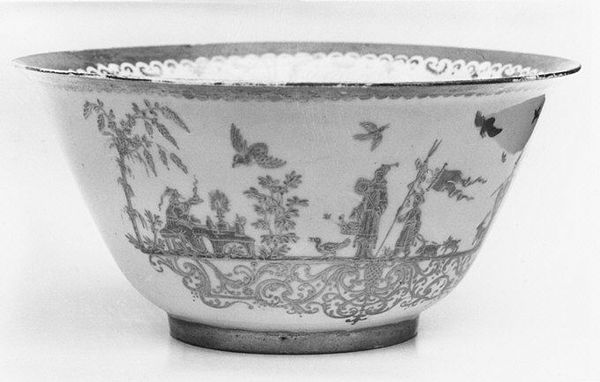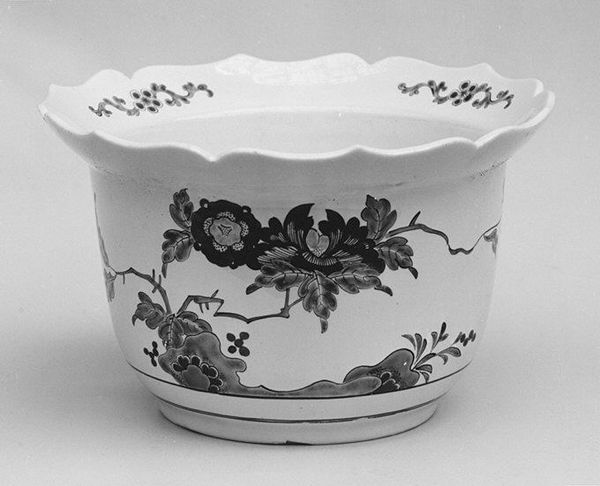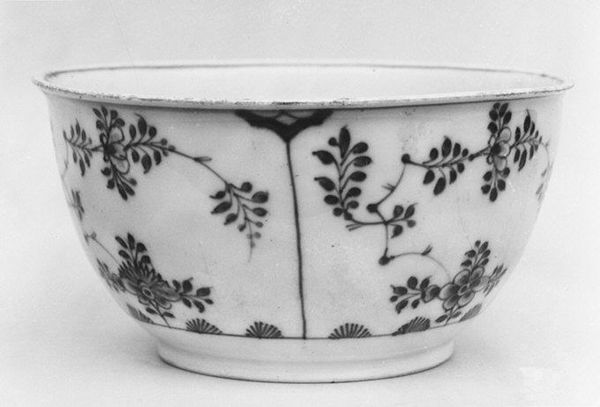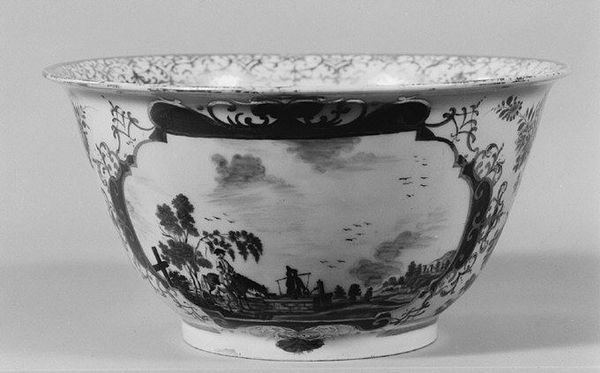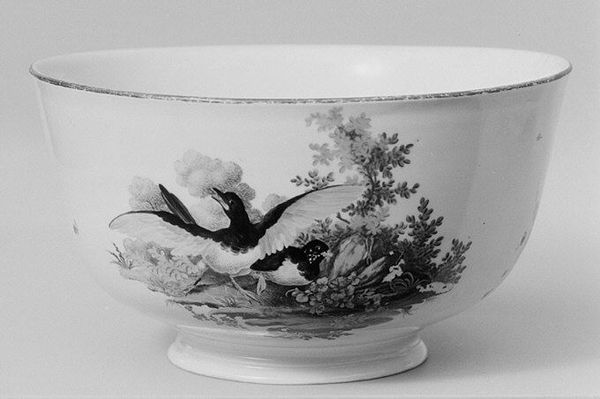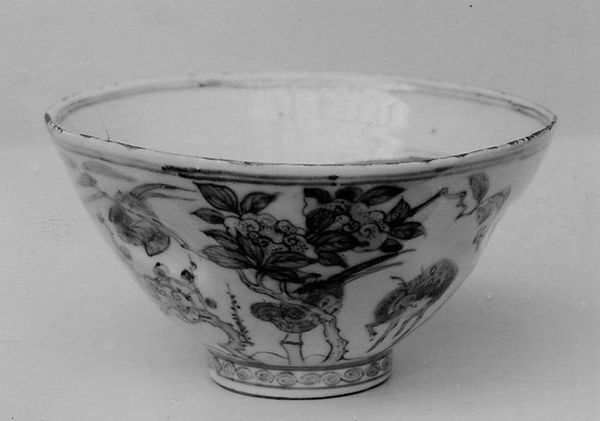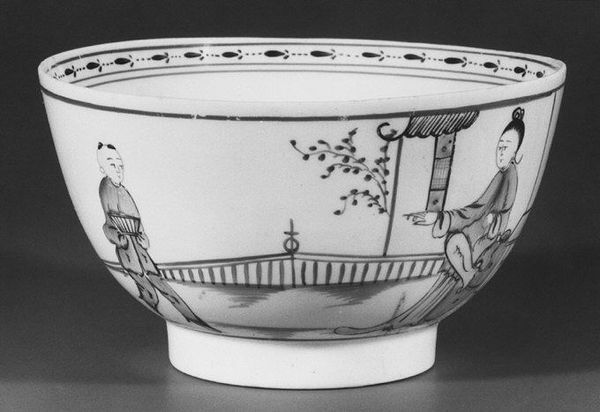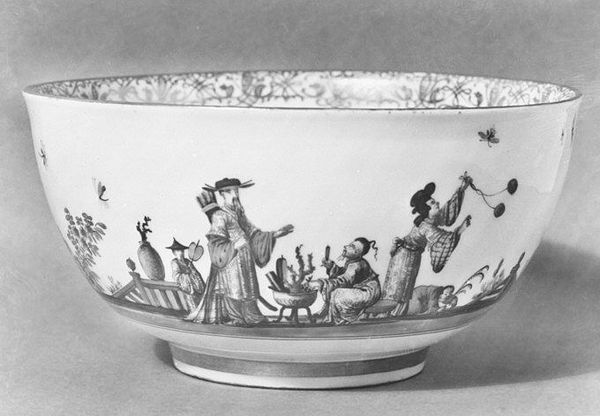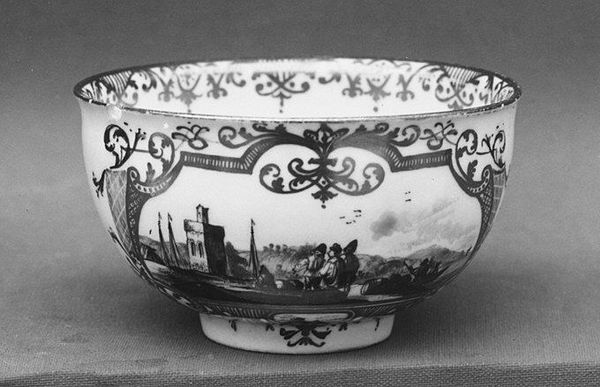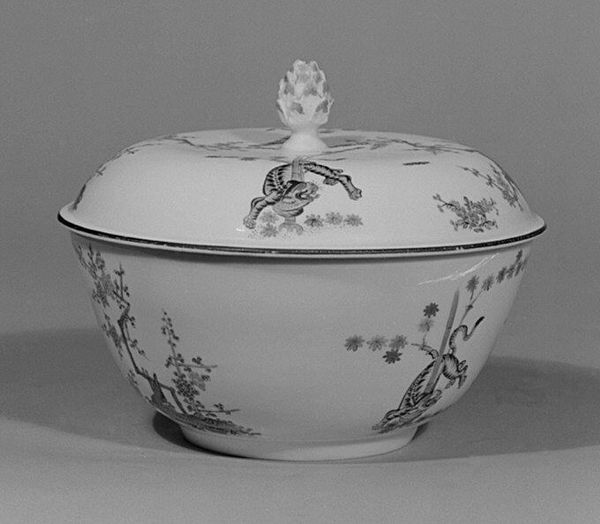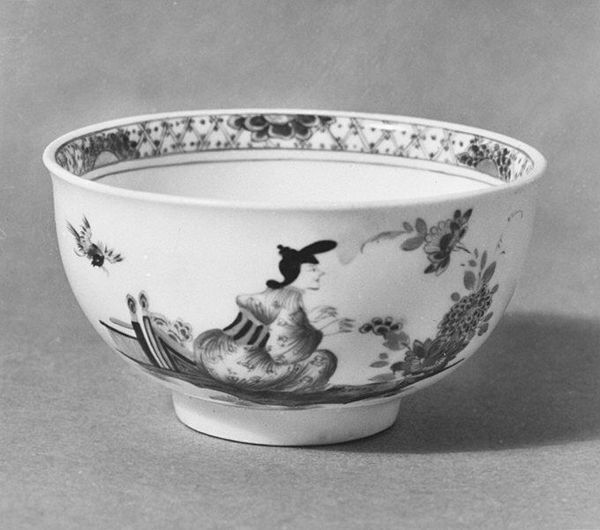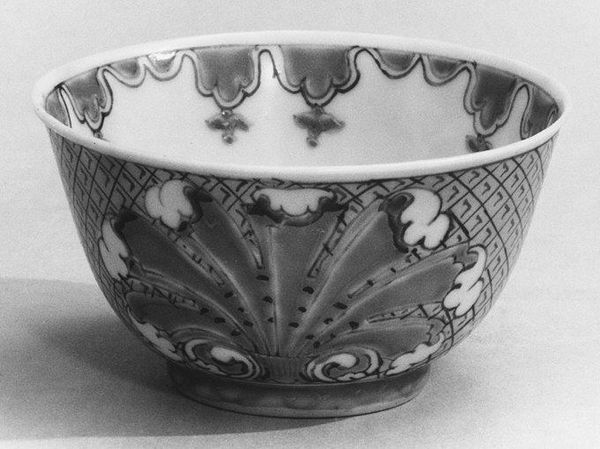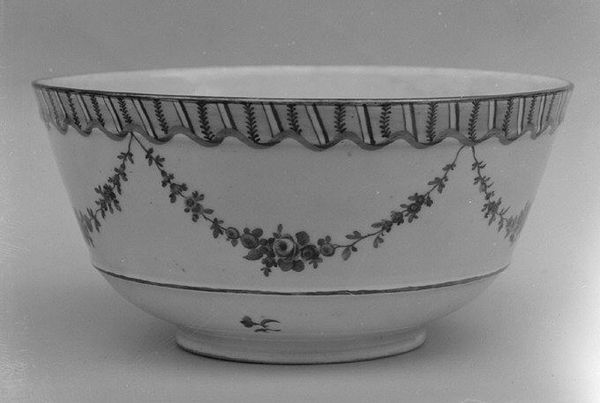
painting, ceramic, porcelain, sculpture
#
medieval
#
painting
#
landscape
#
ceramic
#
porcelain
#
figuration
#
sculpture
#
genre-painting
#
history-painting
Dimensions: 3 7/16 × 6 13/16 in. (8.7 × 17.3 cm)
Copyright: Public Domain
Curator: My initial feeling? Dreamy. Melancholic, even. The world contained within this delicate curve feels a bit like looking into a memory, distant and lovely. Editor: Indeed. Here we have a bowl, crafted between 1721 and 1733 by the Meissen Manufactory. Its porcelain surface becomes a canvas for scenes seemingly lifted from both genre and history painting. It currently resides at the Metropolitan Museum of Art. Curator: Ah, Meissen! Those early days of European porcelain still had this charming clumsiness to them. And seeing painting *on* porcelain – it’s a doubled remove from reality. You have reality, then the painting of it, then that painting replicated on a fragile object meant for daily use. Editor: Precisely. Porcelain itself, historically, carries significant symbolic weight. The smoothness of its surface has often been linked to ideas of purity and perfection. In Chinese art, for example, the color white, prevalent in many porcelains, represents mourning, but also beginnings and honesty. How might we understand its symbolic application here? Curator: Given the landscapes painted onto it, it makes me wonder if that purity, that “cleanness” is the pristine nature people then imagined confronting as they colonized and "discovered" new territories. This feels especially relevant if these are scenes inspired by the popular history paintings. Editor: An interesting thought. And the sunburst, then, acts as an agent of this purported purity—almost like a divine illumination. But perhaps the clouds around the burst suggests a sense of threat or even obscured truths? The land certainly bears witness to an uneasy combination of elements, some broken as in tree limbs or grounded boats. Curator: Right! Broken branches often carry the symbolism of ruin, decay. It is there something to indicate something ominous is at hand and also coming... like they cannot appreciate or hold what they find so precious. What is fragile also breaks... porcelain and hope! Editor: Indeed, porcelain *is* fragile. Perhaps this very fragility reflects the ephemerality of these colonial moments— beautiful yet fraught with future loss or displacement, embedded now on the skin of an object, reflecting the fragile beauty of fleeting moments in our collected cultural memory. Curator: Beautifully said! Suddenly this little bowl feels far bigger, holding whole histories, real and imagined, right there in the palm of your hand.
Comments
No comments
Be the first to comment and join the conversation on the ultimate creative platform.
